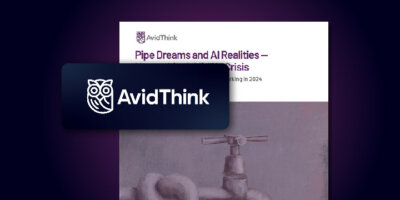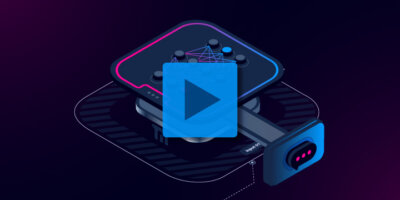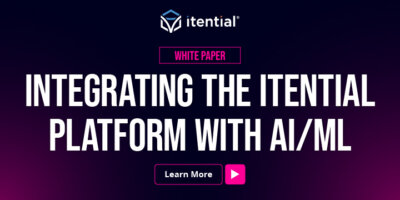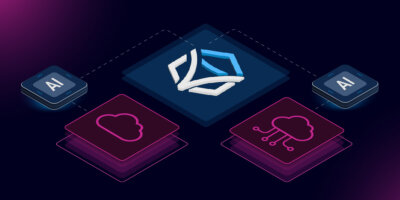Ankit Bhansali • 00:05
My name is Ankit Bhansali, and I’m a Principal Solution Architect at Itential. Recently, we’ve had the privilege of speaking with numerous industry leaders about their future AI roadmaps. These conversations have revealed three key focus areas that organizations are prioritizing. Thank you. Thank you. First, there’s the promise of programmable infrastructure powered by AI-driven orchestration. This combination allows organizations to orchestrate and automate complex workflows, leading to greater agility and efficiency.
Ankit Bhansali • 00:40
Secondly, enterprises are demanding programmable self-service capabilities. Teams want the ability to manage, troubleshoot, and innovate independently without relying on traditional IT bottlenecks. The shift also pushes organizations towards productization of services, making it easier for both humans and programmable interfaces to request services at scale with consistency. Third, the biggest challenge is integrating AI into their existing business processes. Organizations want to harness AI’s potential without disrupting their current operating models. Achieving this balance requires a thoughtful, transformative approach, one that reimagines how we can design and execute end-to-end orchestrated solutions. Our objective was very clear.
Ankit Bhansali • 01:31
We want to drive operational benefits, enhance efficiency, and deploy programmable interfaces for infrastructure changes, and enable more self-service, all while driving compliance with business policies, followed by domain standards, and significantly reducing manual intervention.
Ankit Bhansali • 01:48
Now, let’s explore how Itential orchestrates with AI agents and transforms infrastructure incident remediation, enhancing consistency, enforcing standardized processes, and minimizing downtime. Now, let’s discuss Itential’s approach to AI-driven orchestration. Imagine if we could orchestrate the entire incident management process from detection to remediation to create a truly self-healing network. By integrating advanced AI systems, we can now automate and orchestrate workflows and ensure precise, efficient remediation with minimal human intervention. This demo is going to leverage three specialized AI agent, each playing a critical role. ChatGPT is going to be our AI troubleshooting agent. It’s going to act as a first responder, analyzing incident, diagnosing potential causes, and recommending remediation steps.
Ankit Bhansali • 02:50
Gemini is going to perform AI risk analysis and validation. It’s going to evaluate the proposed solution from ChatGPT, ensuring they are aligned with security policies, compliance frameworks, and operational constraints before the execution. Claude is going to be the AI root cause analysis agent. It’s going to perform deep analysis to identify underlying issues, helping prevent reoccurring incidents and improving long-term network stability. Together, these AI agents will streamline the incident response, reduce manual effort, and enable proactive infrastructure operations, setting the foundation for a fully orchestrated Itential AI-powered future. Now, let’s get into the demo.
Ankit Bhansali • 03:38
Our monitoring system has detected two critical issues, a port failure on a CSR1KV and a high-threat alert on a panorama firewall. These code-related events will trigger an alert, which is going to be sent to Itential’s Incident Remediation Service. For the demo, we’re going to simulate this using Postman. So let’s kick it off.
Ankit Bhansali • 04:06
The first step in our orchestrated flow is logging the incident in ServiceNow. This will ensure full traceability and audit compliance. We’ll come back and review the report in ServiceNow, but for now, let’s continue to the next step. Here, we are now passing the incident data to ChatGPT, our AI troubleshooting agent. This agent is tasked to perform few duties. It should provide incident summarization, do a severity assessment check, check for any historical patterns, and most importantly, generate a remediation plan for the incident, which should include firstly, the config recommendations with pre and post validation checks along with their expected CLI outputs and also provide API payloads for the panorama changes. Next, we’re going to send ChatGPT’s remediation plan to Gemini, our AI risk validation agent.
Ankit Bhansali • 05:06
This agent is tasked to ensure that the proposed actions from ChatGPT are fully aligned with organization’s best practices. It is supposed to evaluate the risk and potential impact of the remediation steps, checking whether they could introduce any disruption or compliance issues. Once the assessment is complete, Gemini is going to make a decision, either to proceed with the remediation steps as recommended by ChatGPT or halt the process if any potential risk or non-compliance is detected. So now, let’s go review the report in ServiceNow, which should include all the results from ChatGPT and Gemini and complete summarization of the steps so far. So on the ServiceNow side, we can see this incident and this incident comes with its report from the flow. It talks about what job is being currently kicked off, what is this flow about, and it’s going to give us a brief overview of Chad GPT’s recommendation with Gemini’s risk analysis and validation. So we get a complete breakdown of the process and the flow. And according to Gemini’s report, the validation is good, and we can continue with that process of remediation. As previously seen in the report, Gemini, a risk analysis and validation agent, gave the permission to continue with the remediation process outlined by ChatGPT.
Ankit Bhansali • 06:39
In the next part of the process, we’re going to leverage Itential’s pre-built configuration flow. In this flow, we’re going to run the pre-checks recommended by ChatGPT. We’re going to also review the proposed configuration by ChatGPT, and we are also going to check for the post-checks, which were also proposed by ChatGPT. So let’s see this in action. So, it looks like the proposed pre-check from ChatGPT was about to check whether the admin port was currently down or not and looks like it is currently down. So, the pre-check does succeed with a failure where the port is down or not and in the current state it is down. So, we’re going to proceed and continue.
Ankit Bhansali • 07:29
In the next part of the flow, we should be able to review the proposed configuration from ChatGPT. So, it looks like this is the proposed configuration after the pre-check and yes, we would like to turn up the port. So, we are going to continue with the process. So, now we have accepted the proposed configuration based on the pre-checks, the proposed configuration. Now, we’re going to review the post-checks and see if the configuration has changed accordingly. So, I’m going to click this task and it looks like after applying the proposed configuration, we can see the post-checks. In this post-checks, it tells us that the interface is up and the line protocol is up and this is the response that’s coming from the device itself.
Ankit Bhansali • 08:19
So, so far, based on all the recommendations, we were able to identify what we had before and after and we also had the proposed change from ChatGPT. Here, we can see the proposed diff based on the pre-check and the post-check and we’re going to proceed with the flow. Similarly, we’re going to perform automated checks and apply configuration on the Panorama side. Finally, we’re going to introduce Claude, a root cause analysis agent. While Chad GPT and Gemini are reactive, Claude is very proactive. It’s going to analyze historical data patterns, it’s going to identify reoccurring issues, it’s going to recommend process improvements, and also it’s going to document findings to drive continuous improvement. With Claude integrated, RCA now becomes a part of every remediation flow, not just the major incident.
Ankit Bhansali • 09:31
And this is the report that’s generated by root cause analysis agent Claude. The same report is also going to be published into ServiceNow Incident, so there’s always a copy of all the events and the findings from the cloud. This demo highlights how Itential brings together the power of AI-driven agents to work together in a controlled environment to transform incident remediation service, especially when leveraging ChatGPT, which delivers fast, intelligent troubleshooting, GemIIni ensuring validation, compliance, and risk-aware execution, and making sure cloud drives long-term resiliency through continuous root cause analysis. By orchestrating these capabilities, Itential empowers organizations to resolve incidents faster, operate with confidence, and build a more reliable proactive infrastructure, where every action is auditable, safe, and aligned with best practices.



